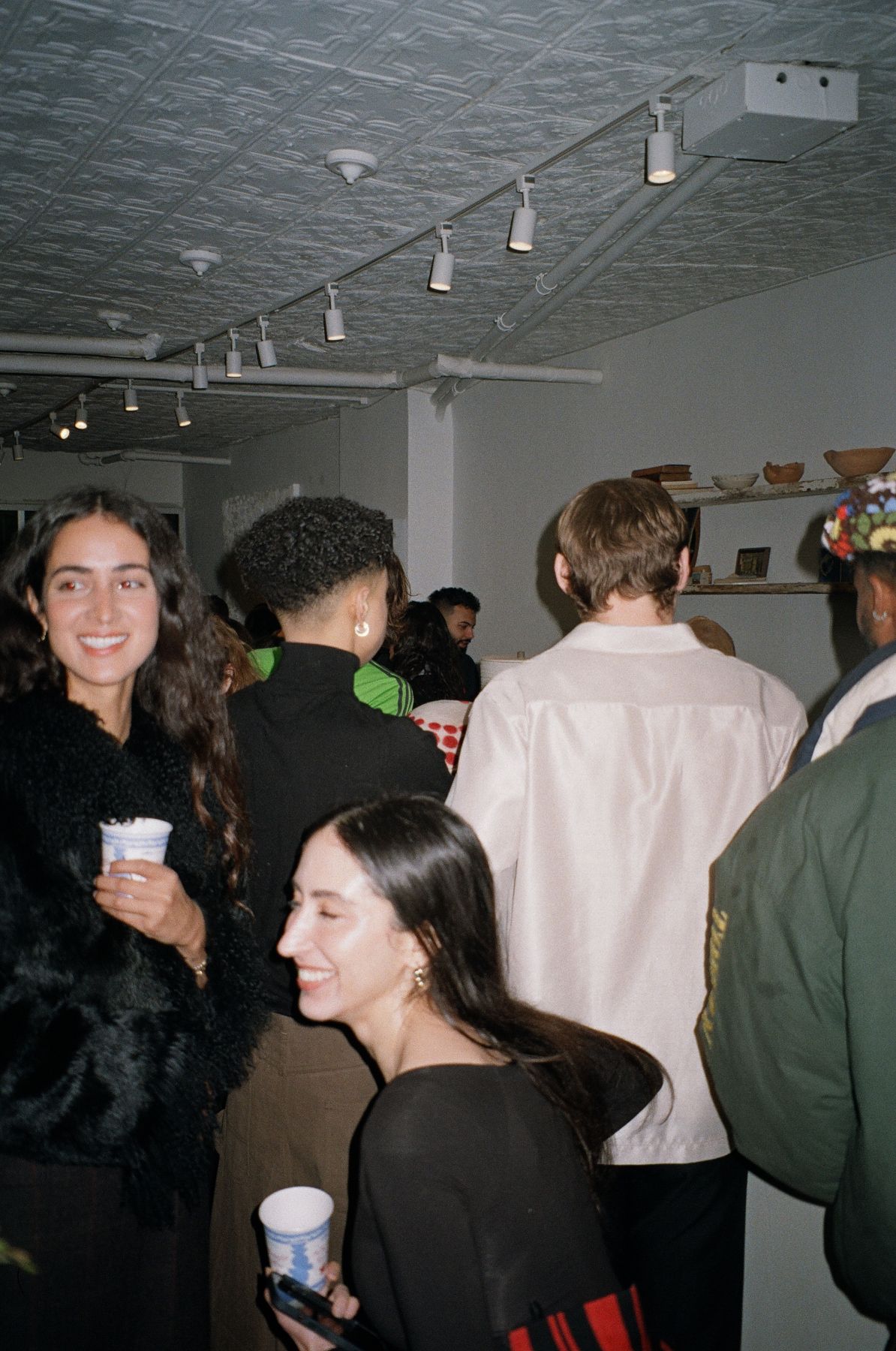
On a glacial February night on Manhattan’s Lower East Side, a pack of people gathered inside menswear store Colbo, pressed into clothing racks as they sipped on white negronis and nibbled on porcini kibbehs. Partygoers spilled out the front door for a moment of respite.
It was a scene that, 20 years ago, might have served as the setting for a magazine issue launch. But in 2023, it was a celebration for the winter issue of Magasin, a Substack shopping newsletter written by former fashion editor Laura Reilly.
“I was a little worried nobody would show up,” Reilly said. “But this is overwhelming.”
It was the latest success for Magasin since its June 2021 launch. The newsletter, where she shares deals on fashion finds like Margiela’s Tabi heels and Maryam Nassir Zadeh backless tops alongside interviews with fashion insiders like Glossier art director Isioma Iyamah, saw its subscriber base grew by 200 percent, to 7,000 followers, from 2022 to 2023.
Last October, she left her job as an editor at InStyle and hired a writer to increase output so she could focus on further expansion with events, editorials and more. Her projected 2023 earnings are in the six-figure range.
Personalised shopping newsletters like Reilly’s are quickly gaining momentum, delivering a strong point-of-view while highlighting lesser-known brands — an antidote to an online shopping landscape littered with endless Amazon recommendations. It’s a continuation of the pandemic’s independent media boom that saw writers and creatives flock from traditional publications to platforms like Substack, where an atmosphere reminiscent of fashion blogging’s early days has blossomed.
Several years along, many writers have found sustainable business models that allow for both financial and editorial freedom without a huge audience or institutional backing. With continued growth and public attention, the next challenge is navigating how to scale without losing the intimacy and trust that attracted readers in the first place.
The Supermarket Effect
This latest generation of shopping newsletters began in response to the sheer amount of product on the internet, as well as people on social media branding themselves as experts on what to buy.
“The internet was becoming this massive supermarket and there was no clarification about where you could get what,” said Leandra Medine Cohen, who launched her newsletter The Cereal Aisle on Substack in January 2021 a few months after shutting down her site Man Repeller.
These shopping newsletters offer ultra-curated product recommendations, with suggestions ranging from a vintage opera coat on The RealReal to a deal on a Lemaire croissant bag on Ssense, which are then contextualised with more in-depth writing. Reilly, for example, interviews downtown cool girls on their wish lists and compiled a Black Friday Google spreadsheet that she updated daily with new deals.
“It reminds me a lot of the audience that early Man Repeller was, where it genuinely feels like a bunch of people who just want to talk about clothes and our feelings,” said Medine Cohen.
However, the newsletter offers a simpler business model. Michael Williams of the menswear blog A Continuous Lean pivoted his blog to Substack in July 2020 and gained a following without the headaches of handling a website and trying to manage advertisers. Similar to Cohen, he notes the feeling of community is more present than in the later years of his blog, where he saw a dropoff in advertising opportunities as viewers spent more time on social media. It’s also in part because of the added paywall — 1,458 of his total 13,714 subscribers pay $8 monthly to access additional posts as well as a podcast.
“It really is just like a blog,” said Williams. “There’s just a lot of things that make it feel like 2010.”
“It reminds me a lot of the audience that early Man Repeller was, where it genuinely feels like a bunch of people who just want to talk about clothes and our feelings,”
— Leandra Medine Cohen
Though these newsletters are by and large not attracting massive audiences, their readerships are devoted. Newsletter provider MailChimp reported an average email open rate across industries at 21.3 percent last year with a click-through rate — the percentage of users that click a link in an email — of 2.6 percent; Reilly’s open rate sits at 70 percent with a click-through rate of 40 percent. For Medine Cohen’s paid subscriber newsletter, the open rate is 90 percent.
That strong following bleeds offline, too. Becky Malinsky, whose newsletter 5 Things You Should Buy has over 17,000 subscribers, said she’s been approached by subscribers on the street who tell her how much the newsletter means to them. Would-be subscribers to Opulent Tips, Harper’s Bazaar fashion news director Rachel Tashejian’s invite-only newsletter, have submitted drawings and written heartfelt notes and poems to be added to her database.
How to Scale
Building a readership is one thing, scaling it into a viable business is another. For those running newsletters, revenue can come in many forms, including merch, subscriptions, and affiliate links (where the writer will get a cut of the purchase if someone buys a product they recommend).
For Williams, revenue growth has been consistent since he relaunched the newsletter, bringing in over $110,000 annually. Blackbird Spyplane’s Jonah Weiner and Erin Wylie have seen their subscriber rate more than double since February of last year, with paid subscriptions increasing by over 65 percent. Weiner said the revenue from the newsletter is far more than his earnings as a freelance journalist.
For loyal subscriber bases, affiliate links are particularly effective: Medine Cohen finds that conversions are higher on her newsletter, which has roughly 65,000 subscribers, than on her Instagram, which has over one million followers.
It’s a balance. Writers like Reilly, who doesn’t employ a paid subscription model, say that they don’t want affiliate performance to dictate content.
“I’ve seen what affiliate content turns into when the only metric is the bottom line, and it really just takes away from making good content,” said Reilly. She uses affiliate links for products she already intended to recommend, currently half the links in her newsletter.
For that reason, newsletter operators can struggle with finding a path to scale that still feels organic to their user base, particularly given how engaged their followings are.
Brand collaborations and sponsorships have proven elusive, particularly because Substack doesn’t provide as comprehensive a demographic breakdown as platforms like Instagram. “I just don’t think brands really understand the ecosystem at all,” said A Continous Lean’s Williams.
Though they have gained other forms of high-profile attention. Tyler Bainbridge’s newsletter Perfectly Imperfect, for instance, started with cataloguing recommendations from New York’s downtown set. Now, it features interviews with celebrities like Charlie XCX, Anna Delvey and Michael Imperioli.
Operating on your own does mean there’s no external pressure to hit certain metrics; growth can come at your own pace. Weiner has turned down offers from brands for collaborations and sponsored content, and refuses gifts of any kind from brands.
“We don’t care about getting big,” he said.
For some, the newsletter has become enough of a calling card that other work has followed. Writer Sami Reiss’s furniture-focussed newsletter Snake Auction, for instance, helped earn him a writing job at GQ. Reilly has been featured in publications including The New York Times and The Atlantic. A legacy media publication recently offered a deal to buy her newsletter while allowing her to continue to publish it under their distribution, but she declined so she could retain the intellectual property.
Even for writers with as much name recognition as Medine Cohen, the newsletter has introduced her to a new audience.
“I hosted a shopping event at my friend’s consignment store a week ago, and I invited my subscribers to come to the store,” said Medine. “And three women asked me what I did before starting my newsletter, like what kind of job I had before starting it.”



